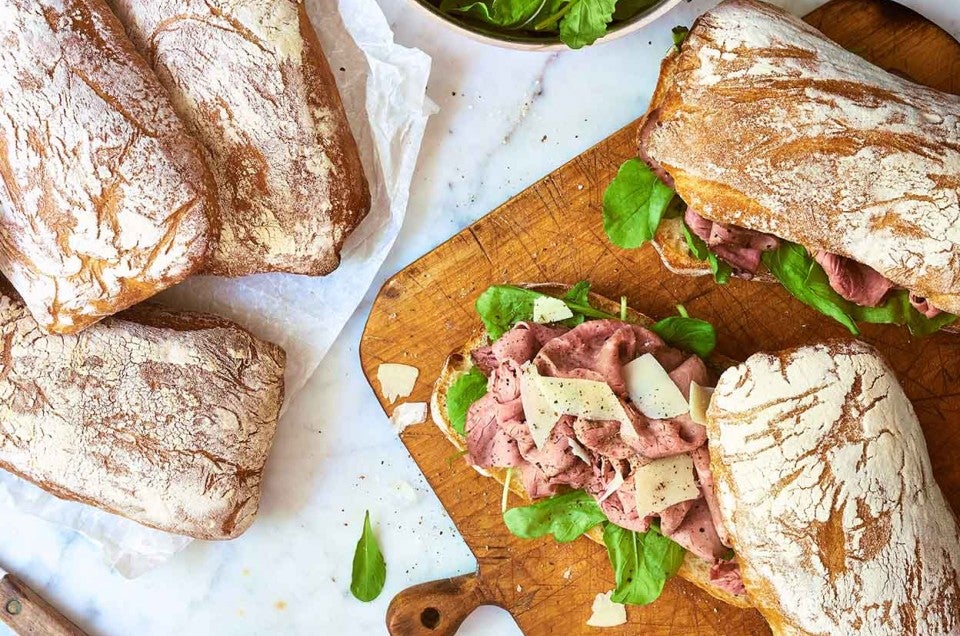Sourdough Ciabatta Sandwich Rolls
We're intrigued by sourdough, and by the popular Italian bread, ciabatta. Put the two together, and you get these delicious rolls distinguished by their crunchy crust and extra-light interior.

We're intrigued by sourdough, and by the popular Italian bread, ciabatta. Put the two together, and you get these delicious rolls distinguished by their crunchy crust and extra-light interior.

Mix all the dough ingredients together, using 6 cups (723g) of the flour. Turn the dough out onto a lightly floured work surface and knead, adding more flour only as necessary to make a smooth, satiny, elastic dough. The dough should definitely be on the slack side, but not oozy; a slack dough will yield ciabatta's open crumb, but the rolls also need to be able to hold their shape in the oven.
Cover the dough, and let it rise for about 2 hours, until doubled in size.
Gently deflate the dough and turn it onto a lightly floured work surface.
Pat the dough into a rectangle about 10" x 15". Using a bench knife, chef's knife, or pizza wheel, cut the rectangle into six 7 1/2" x 3 1/2" rolls. Don't make yourself crazy with exact measurements; your goal is six rectangular rolls that are all about the same size.
Space the rolls on two lightly greased or parchment-lined baking sheets, three to a sheet; they'll need room for expansion. Cover the rolls and let them rise until puffy; this should take approximately 30 minutes.
While the rolls rise, preheat the oven to 425°F.
Spray the loaves with water; if desired, sift a thin layer of flour on top. Bake the rolls for 10 minutes. Lower the oven temperature to 375°F, and bake for an additional 20 to 25 minutes, until the rolls are a deep golden brown.
Remove the rolls from the oven, turn off the oven, and return the rolls to the oven, with its door cracked open a couple of inches, to cool completely.
For extra-crusty crust, add steam to your oven as follows: While the oven is preheating, place an empty cast iron frying pan on the oven rack below a baking stone. If possible, adjust the stone and pan so that the pan isn't directly under the stone, making it easier for steam to reach the baking rolls. Once you’ve placed the rolls in the oven, pour 1 cup of boiling water into the cast iron frying pan. Steam will billow from the pan upwards to envelop the baking rolls; be sure to wear good oven mitts to shield your hands and arms. Quickly close the oven door to trap the steam.
Looking for tips, techniques, and all kinds of great information about sourdough baking? Find what you need in our sourdough baking guide.


